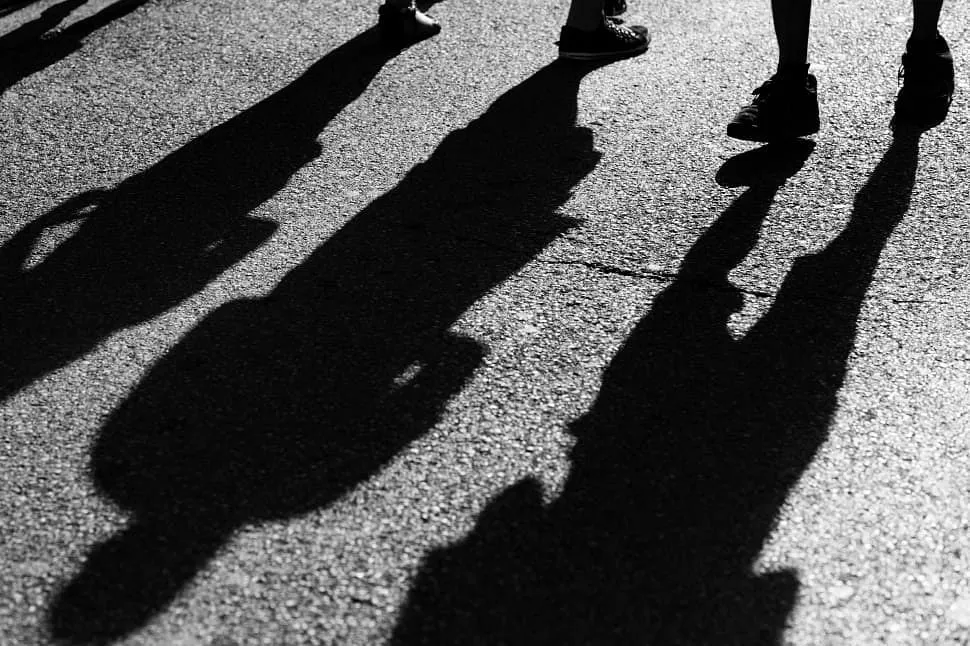What is a shadow? By definition, it’s “partial darkness or obscurity”. Beyond our mirror image, the concept of the shadow holds a multifaceted and metaphorical significance… Parchai Hai Ik Bayan-e-Sukhan /Jo Andar Ke Haqiqat Ki Zuban Hai…It has been explored and contemplated by numerous thinkers and creatives throughout history, offering profound insights into the human condition and its intricate relationship with the cryptic aspects of the self.
The idea of the shadow in a creative style, its significance and connection to human lives, is of immense interest. In literature, the shadow can manifest through complex and ethically ambiguous characters.
These figures often serve as foils to the protagonist, highlighting the dichotomy between light and darkness within the human psyche. One of the most famous explorations of the shadow can be found in Robert Louis Stevenson’s The Strange Case of Dr. Jekyll and Mr. Hyde. The novel delves into the duality of human nature, revealing the transformative power of the shadow when it is unleashed and allowed to roam unrestrained.
In T.S. Eliot’s poem The Hollow Men, the shadow emerges as a symbol of emptiness and spiritual decay. The poem’s opening lines—“We are the hollow men / We are the stuffed men”, express a sense of hollowness and a loss of substance, as if the individuals described are mere shadows of their former selves. Eliot’s portrayal reflects the disconnection from their real selves and the underlying existential crisis that plagues humanity.
Emily Dickinson, renowned for her introspective verse, offers insights into the enigmatic nature of the shadow. In her poem We grow accustomed to the Dark, Dickinson contemplates the human experience of adapting to the shadowy unknown.
She explores the idea that, over time, we become accustomed to the darkness, learning to justify our adjustment to it. Dickinson’s poem reminds us that, despite its elusive and unsettling nature, the shadow is an integral part of our existence, shaping our outlook on the world.
The German poet Rainer Maria Rilke, in his collection The Book of Images, explores the changing potential of shadows. In his poem Shadow-Flower, Rilke describes a flower’s silhouette cast upon a wall, emphasizing the beauty and ephemeral nature of this transient image.
The shadow-flower becomes a symbol of fleeting moments, recapitulating to us the impermanence of life and the profound impact shadows can have on our perception of reality.
These literary examples convey the shadow’s capacity to symbolize duality, existential emptiness, marginalization, adaptation, and transformation. It serves as a gripping metaphor, reflecting the complexities and nuances of the human experience.
Moreover, the shadow plays a significant role in the territory of intellectual discourse. It exposes that our understanding of the world and ourselves is inherently incomplete.
The exploration of the shadow prompts us to question our assumptions, biases and, most importantly, our puerile preconceived notions. By embracing the shadow, we embark on a journey of introspection—a sort of self-discovery and self-awareness, unearthing the hidden truths that lie beneath the surface.
The shadow also finds resonance in the concept of the collective unconscious, as proposed by Carl Jung. It suggests that the shadow is not only an individual phenomenon but also a part of our shared human experience.
The collective shadow encompasses the darker aspects of humanity that are deeply ingrained in our collective history, culture and psyche. By acknowledging and addressing these shadows, both individually and collectively, we strive toward personal and societal growth and transformation.
In our daily lives, the shadow influences our behaviors and relationships in subtle and profound ways. Unacknowledged aspects of the self can manifest as projections onto others, leading to conflict and bickering.
By embracing and integrating our shadows, we cultivate a thoughtful awareness and acceptance of ourselves and others. It is through this process that we can foster compassion as well as compromise, and move on.
The shadow, with its rich philosophical and creative connotations, holds a prominent place in our understanding of the human experience. It represents the obscured aspects of our psyche, both individually and collectively.
It is the embodiment of our dark impulses, our unexplored potential and the aspects of ourselves that we consciously or unconsciously disown. By exploring the shadow through artistic expression and intellectual discourse, we confront our hidden fears, desires and capability.
By embracing the silent narrative of shadows, we learn to listen attentively to the unspoken truths that lie beneath the surface, delving beyond superficial appearances.
Shadows serve as mirrors, reflecting our innermost thoughts, allowing us to face our authentic selves and navigate the intricacies of our existence. Through the integration of the shadow, we come to understand and accept ourselves more fully, leading to a truthful deeper connection with ourselves and others, enabling a peaceful engagement with life.
Disclaimer: The views and opinions expressed in this article are the personal opinions of the author.
The facts, analysis, assumptions and perspective appearing in the article do not reflect the views of GK







